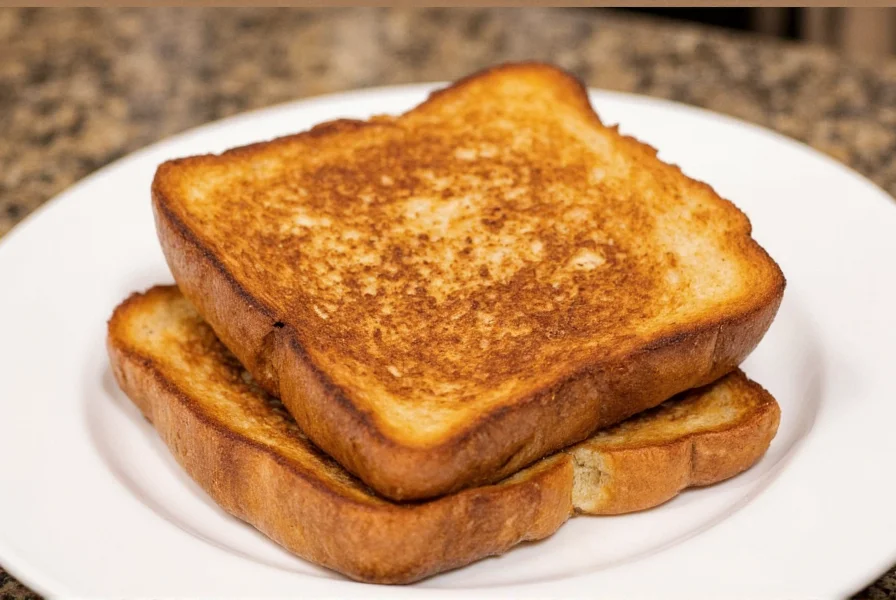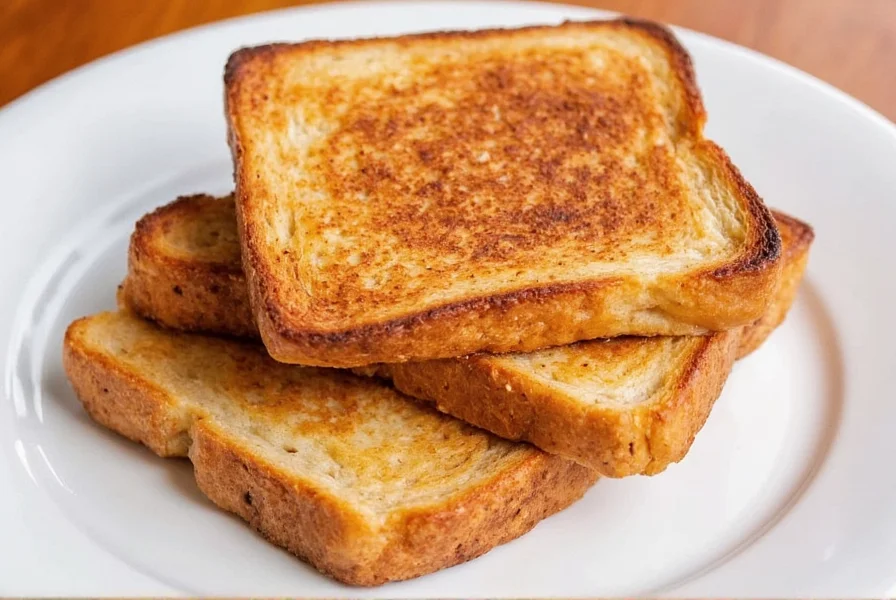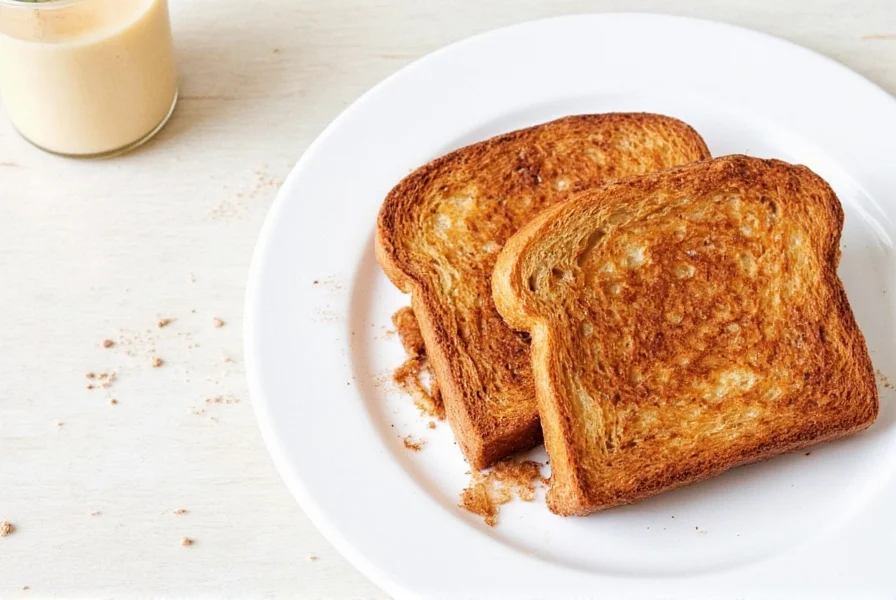There's something magical about the simplicity of cinnamon toast. This humble treat transforms basic pantry staples into a warm, aromatic delight that satisfies sweet cravings without the fuss of baking. Whether you're rushing through a weekday morning or seeking comfort on a lazy weekend, mastering the best cinnamon toast recipe delivers instant gratification with minimal effort.
The Science Behind Perfect Cinnamon Toast
What separates mediocre cinnamon toast from extraordinary requires understanding three key principles. First, butter temperature matters – softened butter spreads evenly without tearing bread, creating the ideal base for cinnamon-sugar adherence. Second, timing is critical – applying the spice mixture immediately after toasting allows the sugar to partially melt into the bread's surface. Third, ingredient ratios affect texture – too much sugar creates a gritty finish, while insufficient cinnamon lacks depth.
Essential Ingredients Explained
| Ingredient | Why It Matters | Pro Tip |
|---|---|---|
| Bread | Thicker slices (1–1.5cm) provide structural integrity | Sourdough adds tang; brioche creates richness |
| Butter | Full-fat content ensures proper sugar adhesion | Leave at room temperature for 30 minutes |
| Cinnamon-Sugar | 2:1 sugar-to-cinnamon ratio balances sweetness and spice | Add pinch of salt to enhance flavor complexity |
Step-by-Step Preparation
- Toast bread using your preferred method until golden (3–4 minutes in toaster, 2–3 minutes per side in skillet)
- Immediately spread softened butter evenly across entire surface while bread is hot
- Combine cinnamon and sugar in small bowl (try 2 tbsp sugar + 1 tbsp cinnamon)
- Sprinkle generously while butter is still melted, tilting toast to distribute evenly
- Let rest 60 seconds before cutting to allow flavors to meld
| Method | Time | Best For |
|---|---|---|
| Toaster | 3–4 minutes | Quick weekday breakfasts |
| Saute pan | 4–6 minutes | Deeper caramelization |
| Oven broiler | 2–3 minutes | Multiple servings evenly |
Avoid These Common Cinnamon Toast Mistakes
- Using cold butter – creates uneven coverage and tears bread
- Applying sugar to cooled toast – prevents proper adhesion
- Overloading with sugar – creates gritty texture instead of smooth coating
- Using pre-mixed cinnamon sugar – often contains anti-caking agents that affect texture
Delicious Variations to Try
Once you've mastered the classic cinnamon toast recipe, experiment with these professional variations:
Lemon-Zest Cinnamon Toast: Add 1 teaspoon finely grated lemon zest to your cinnamon-sugar mixture. The citrus brightens the spice profile beautifully, especially with brioche bread.
Spiced Maple Cinnamon Toast: Replace half the butter with warmed pure maple syrup. Sprinkle with cinnamon-sugar mixed with 1/4 teaspoon nutmeg for autumnal depth.
Crunchy Cinnamon Toast: After applying cinnamon-sugar, broil for 30 seconds to caramelize the surface. Watch carefully to prevent burning – this creates an irresistible crackly topping.

Serving and Storage Tips
Cinnamon toast tastes best when served immediately after preparation. For optimal enjoyment, cut diagonally and serve with:
- A dollop of Greek yogurt to balance sweetness
- Fresh apple slices for complementary flavor
- A sprinkle of flaky sea salt to enhance complexity
While not ideal for storage (texture degrades quickly), leftover cinnamon toast can be revived by briefly toasting again. Never store with cinnamon-sugar applied – add the spice mixture just before serving for best results.
Why This Simple Recipe Endures
The easy cinnamon toast recipe persists across generations because it delivers maximum flavor with minimal ingredients. Unlike complex pastries, it requires no special equipment or baking skills. The magic happens through proper technique rather than elaborate components. When executed correctly, this humble preparation showcases how fundamental cooking principles – temperature control, ingredient interaction, and timing – transform ordinary ingredients into extraordinary experiences.

Frequently Asked Questions
Can I make cinnamon toast without butter?
Yes, but results differ significantly. Substitute with coconut oil or olive oil for similar fat content, though flavor profiles will change. For dairy-free options, use vegan butter sticks (not spreads) at room temperature. Note that oil-based versions won't carry cinnamon-sugar as effectively, so apply spices before toasting.
Why does my cinnamon sugar slide off the toast?
This happens when you apply cinnamon sugar to cooled toast. The butter must be fully melted for proper adhesion. Always spread softened butter immediately after toasting, then apply your cinnamon-sugar mixture while the surface remains warm. For extra security, lightly press the sugar into the buttered surface with a spoon.
What's the best bread for cinnamon toast?
Thicker-cut artisan breads like sourdough, brioche, or challah work best due to their structural integrity. Avoid ultra-thin sandwich bread which becomes soggy. Day-old bread actually performs better than fresh – the slightly dried texture absorbs butter without becoming mushy. For gluten-free options, choose dense rice-based loaves rather than airy alternatives.
How can I make cinnamon toast healthier?
Reduce sugar content by using a 1:1 cinnamon-to-sugar ratio instead of 1:2. Substitute half the sugar with monk fruit sweetener. Use whole grain bread for added fiber. For lower fat content, apply butter sparingly with a pastry brush rather than spreading generously. Remember that even healthy versions should maintain proper butter-to-bread ratio for optimal texture.
Can I prepare cinnamon toast ahead of time?
Not ideally – the magic happens when cinnamon-sugar meets warm butter. However, you can prepare components in advance: mix your cinnamon-sugar blend (stays fresh 3 months in airtight container), slice and bag bread, and soften butter. When ready to serve, toast bread, apply butter, then sprinkle with pre-mixed spices. Never assemble complete pieces ahead of time – texture deteriorates rapidly.











 浙公网安备
33010002000092号
浙公网安备
33010002000092号 浙B2-20120091-4
浙B2-20120091-4